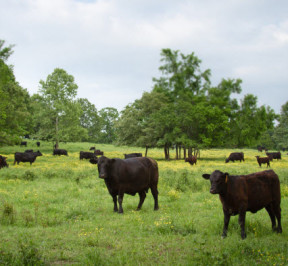Home Page › Halal Meat › Do you really want to know where your meat comes from?

Jan 29
Do you really want to know where your meat comes from?
Country of Origin Labeling (COOL) informs customers of the source of certain foods. This issue has been around for a long time now (began with 2002 Farm Bill) and has always been a controversy. USDA issued a new proposed rule for meat labeling last week which has sparked a whole new set of fireworks between pro and con groups. Basically, the pro and con arguments over COOL are simple. Proponents of mandatory COOL believe labeling will provide a competitive advantage for domestically produced meat and satisfy consumer demand for source information. Opponents say mandatory COOL simply adds costs and paperwork across the production chain without providing benefit to consumers or higher prices for U.S. producers.
The final rule on COOL for all meat went into effect on March 16, 2009. This I believe represents overwhelming consumer support for these labels because more consumers are interested in knowing the source of their food. Yet, this voluntary rule did not truly achieve the intent which is to fully inform consumers about the origins of their food. The big ag industry was asked to voluntarily include which production step occurred in which country when the product comes from multiple countries. Yet, they have been able to use labels that allow for the commingling meat products of different origins. Labels may be very vague and read “mixed origin” or “product of Mexico, United States and 7 other countries”.
Adding to our debate of the issue within the US, a complaint was filed by Mexico and Canada with the World Trade Organization (WTO) saying that the United States’ COOL labeling infringed upon the Free Trade Agreement. This has been simmering for the last 4 years and in December 2012 the WTO ruled in favor of Mexico and Canada that COOL would treat Canadian and Mexican imports less favorably than it treated domestic products. The United States has until May 23, 2013 to come into compliance with the WTO ruling on COOL.
The new proposed rule would require producers to give information on the label about there the animal was born, raised and slaughtered. Plus it would dis-allow for meat to be co-mingled.
“USDA expects that these changes will improve the overall operation of the program and also bring the current mandatory COOL requirements into compliance with U.S. international trade obligations,” Agriculture Secretary Tom Vilsack said in a press release.
So do we, the American consumer, have the right to know where products in our food supply come from and let us decide which product we might buy?? Evidently, some of the opposing faction representing the Big Ag groups do not think so.
I applaud Secretary Vilsack doing what I think is the right thing to allow our food supply to be more transparent. Consumers have come to demand more information on who grows our food, where it is grown and how it is raised. Many producers want this transparency to highlight how their products are differentiated from commodity products. Many small-scale, local family farms are proud to show how and where their products are raised. In fact, at Rain Crow Ranch some of our labels say, “Raised with pride on an American Family Farm”.
Consumers who want the transparency of this sort of labeling so they can make informed purchasing decisions about the food they buy. Organizations representing these attitudes such as Food and Water Watch, National Farmers Union, WORC, AGA and R-CALF .
Who comes out against this ruling? NCBA (National Cattleman’s Beef Association) and AMI (American Meat Institute) for a couple.
“The proposed rule is even more onerous, disruptive and expensive than the current regulation implemented in 2009. Complying with this proposal, should it become mandatory, will create more excessive costs that will be passed onto consumers,” said AMI President J. Patrick Boyle in a statement to the media.
National Cattlemen’s Beef Association (NCBA) President Scott George, a cattleman from Cody Wyo., issued the following statement regarding the United States Department of Agriculture’s (USDA) proposed amendment to the mandatory Country of Origin Labeling (COOL) rule:
“NCBA has maintained that there is no regulatory fix that can be put in place to bring the current COOL rule into compliance with our World Trade Organization (WTO) obligation or that will satisfy our top two trading partners; Mexico and Canada. With the amended rule, the USDA has proven that to be true. The proposed amendments will only further hinder our trading relationships with our partners, raise the cost of beef for consumers and result in retaliatory tariffs being placed on our export products. The requirement that all products sold at retail be labeled with information noting the birth, raising and slaughter will place additional record keeping burdens on processors and retailers, contrary to the administration’s assertion. Moreover, this combined with the elimination of the ability to commingle muscle cuts, will only further add to the costs of processing non-U.S. born, raised and slaughtered products. The end result will be hesitancy to process imported product and increased instances of less favorable treatment of foreign product, giving our trading partners a stronger case at the WTO.”
For once, I am pleased that the USDA, AMS response reflects a promise. This new ruling has been published for comment and comments must be received by April 11, 2013.
Federal eRulemaking Portal: http://www.regulations.gov Follow the instructions for submitting comments. Comments may also be submitted to Julie Henderson, Director, COOL Division, Livestock, Poultry, and Seed Program, Agricultural Marketing Service, U.S. Department of Agriculture (USDA); STOP 0216; 1400 Independence Avenue S.W., Room 2620-S; Washington, DC 20250-0216





